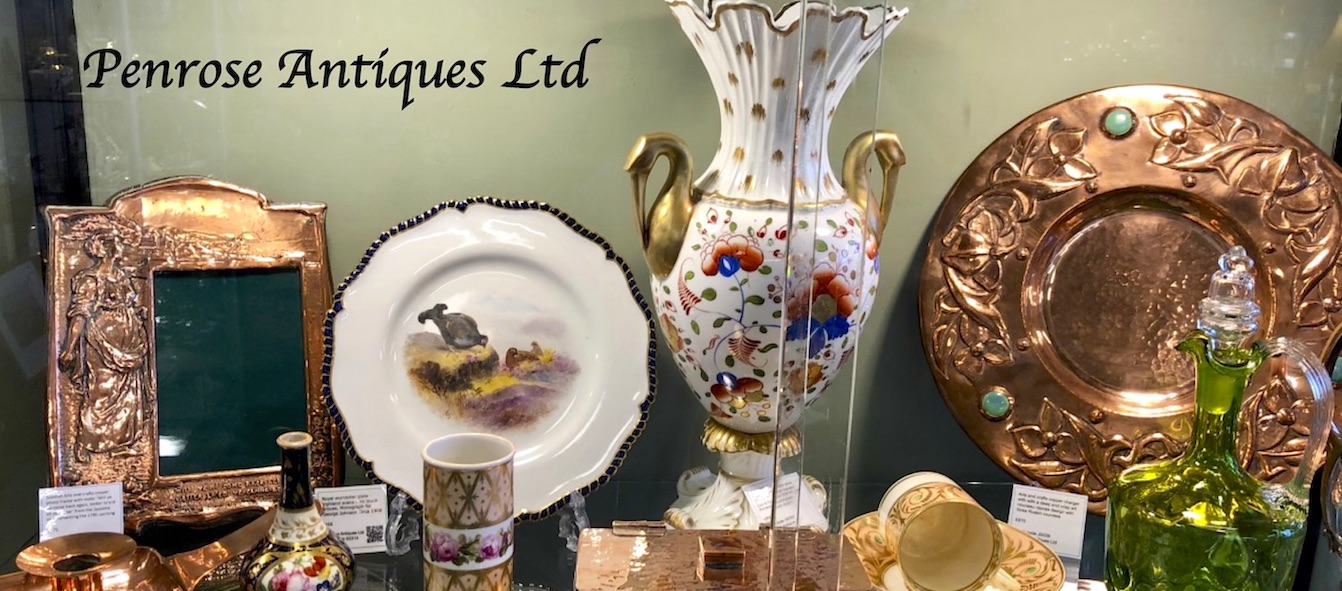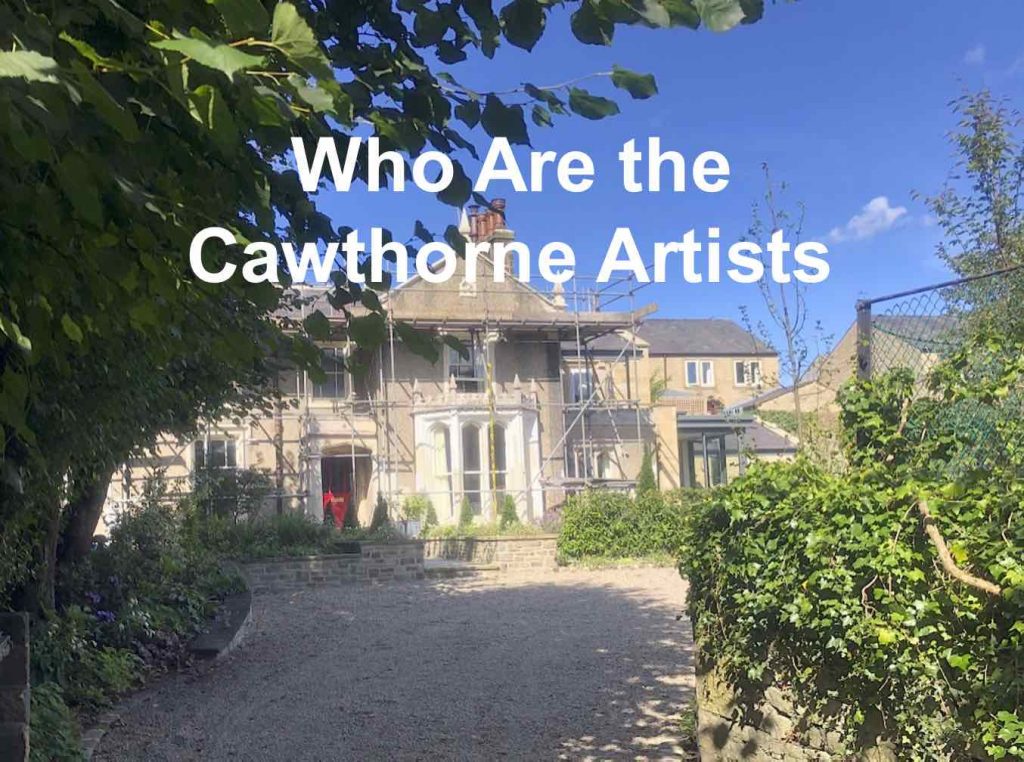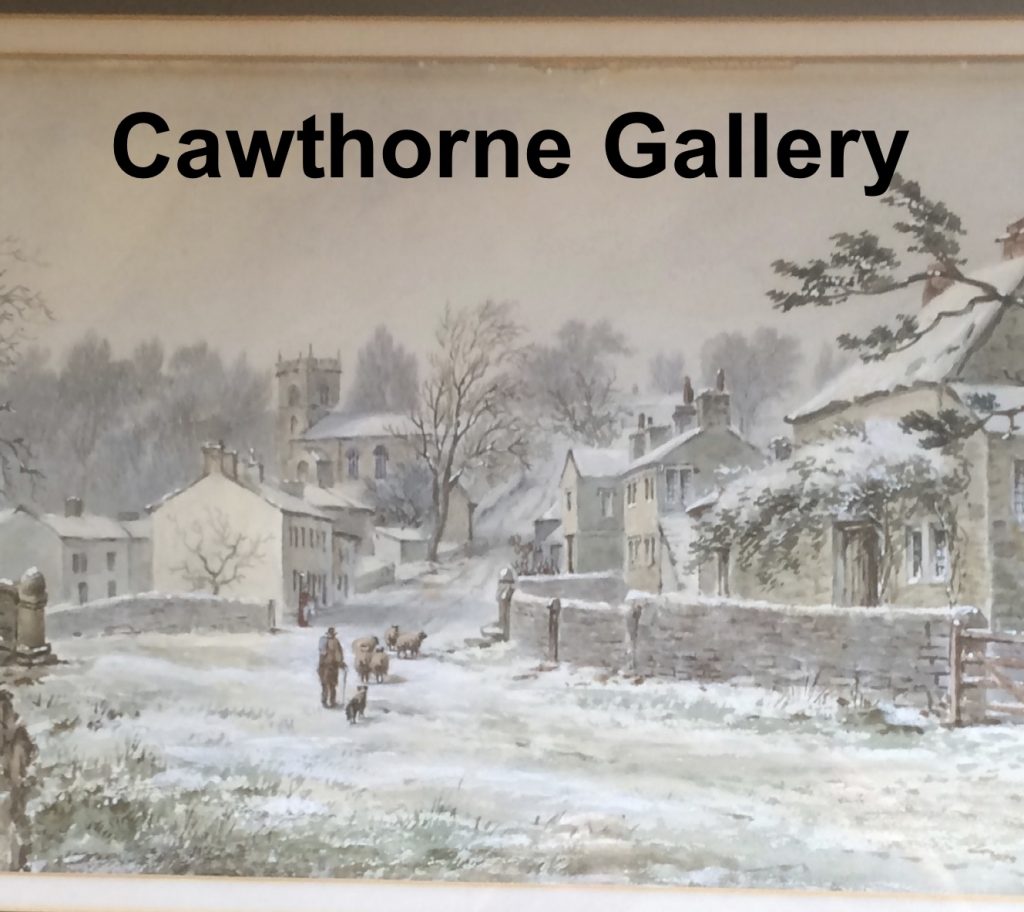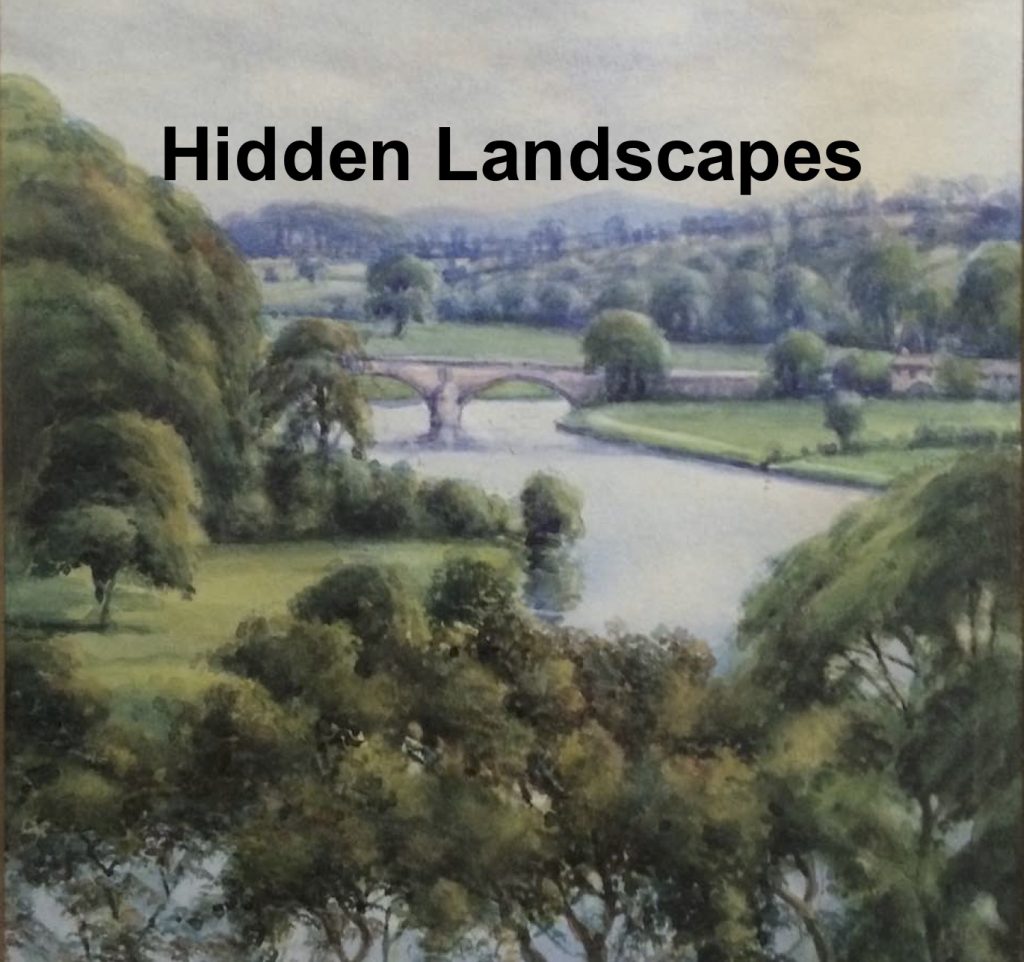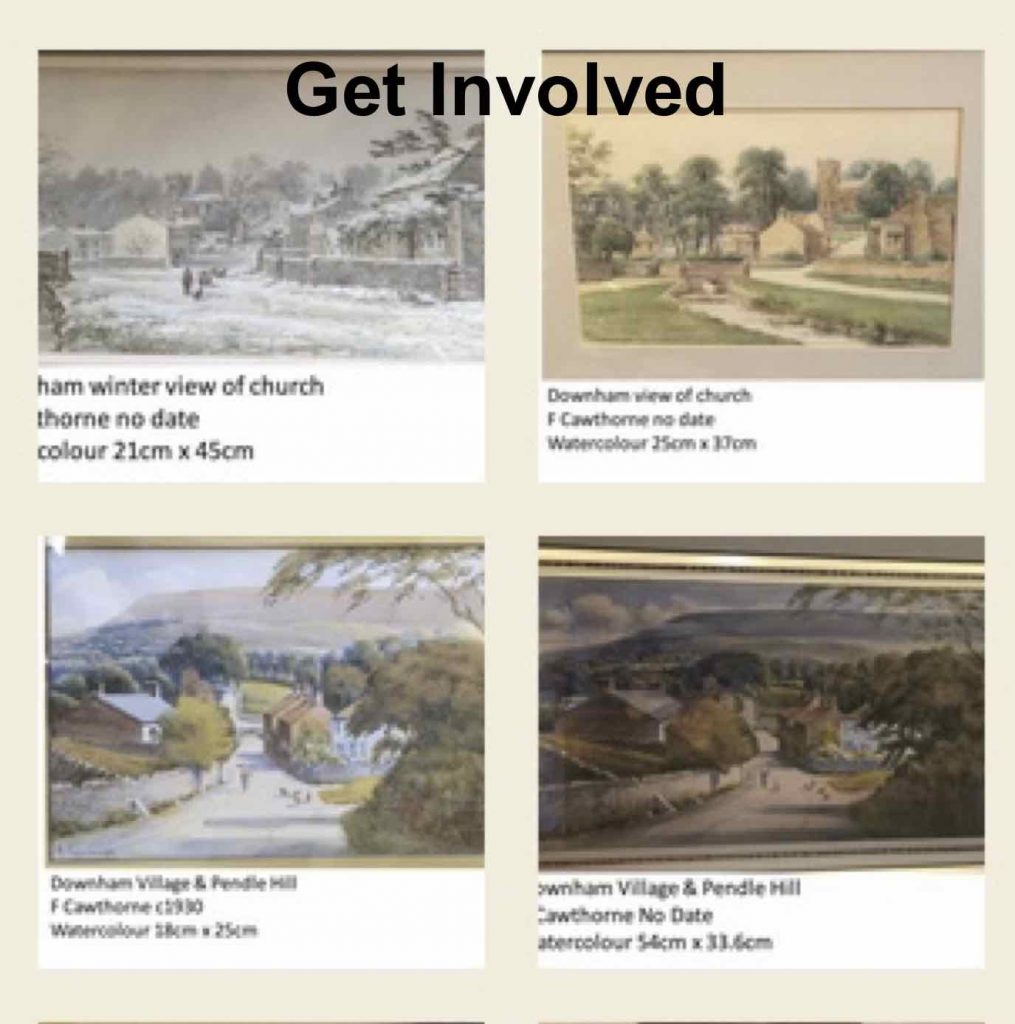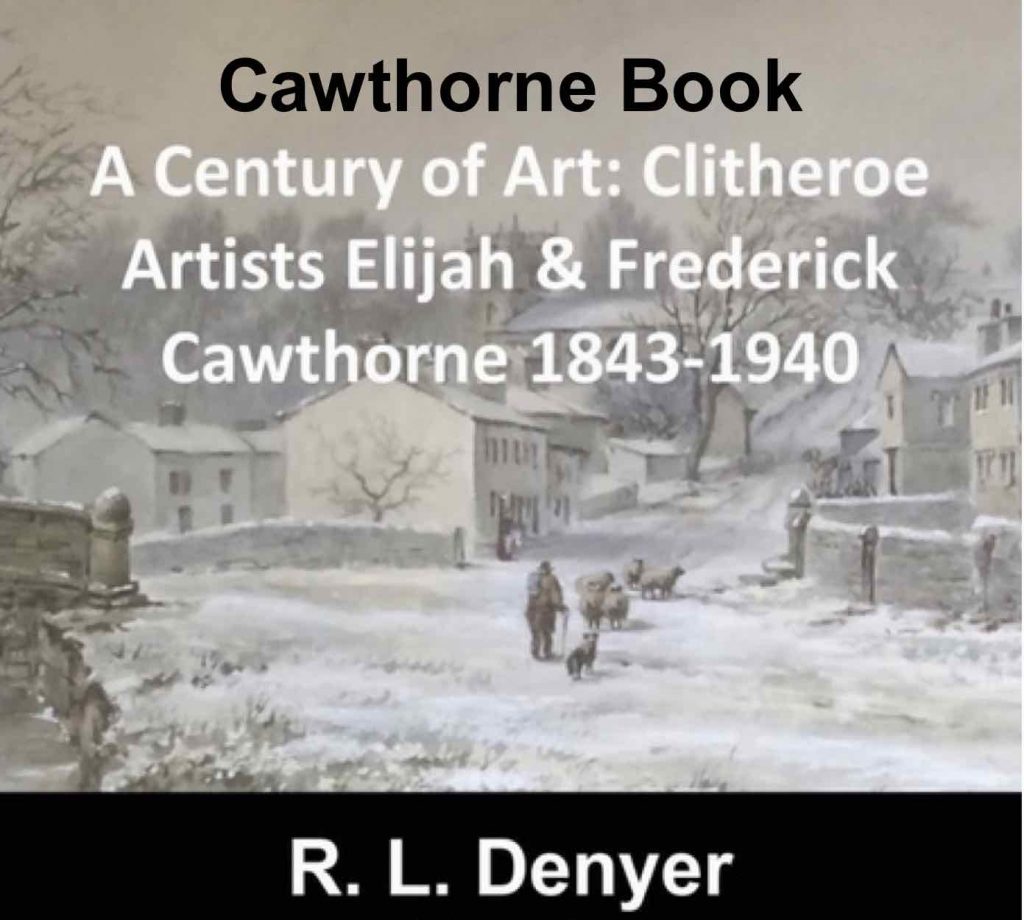Extracts from the Book “A Century of Art: Clitheroe Artists Elijah and Frederick Cawthorne 1843 – 1940” Extract 1
This book explores the life and work of artists Elijah Sylvester Newton Cawthorne (1844 – 1913) and his son Frederick Charles Cawthorne (1877 – 1940). It examines their artwork, looks at the Cawthornes as artists, and assesses the significance of their work within art history.
The Cawthornes were artists based in Clitheroe, Lancashire. Their lives span a time of intense political upheaval in Western Europe, as well as significant industrialisation and social change in England. This period also witnessed a number of significant developments in art. The art academies of the eighteenth century had laid out a clear path for artistic training, which consisted of 4 years rigorous study. The academies had also defined the acceptable subject matter for art, which was expected to be refined and morally uplifting. Classical scenes and allegories were considered the most suitable subject matter for artists. By the mid-nineteenth century, the academic tradition was still strong in the French art world, where success was defined as having a painting accepted at the Paris Salon. This was about to be changed, with the arrival of Impressionism. Impressionist works used strong colours and often depicted realistic scenes, almost spontaneous sketches with visible brushstrokes, which gave an impression of a subject, from which the artistic style takes its name. In 1863, the Salon refused so many submissions, an alternative was set up – the Salon des Refusés – which was dominated by the Impressionists. The effect of light was of critical importance in Impressionism, and many works were set outdoors, having been painted en plein air rather than in a studio, and took outside scenes as their subject matter. Artists experimented with the newer, freer style. In England, artists came together and formed informal groups or schools in various locations such as Newlyn, Norwich and Staithes, but London acted as a magnet, drawing artists to it from across the country. There were many links between London artistic groups and notable French artists. Robert Bevan, a prominent member of the Fitzroy Street Group and the later Camden Town School met with Gauguin in 1894. Roger Fry and Vanessa Bell, both members of the Bloomsbury Group, travelled to France where they met with Picasso and Matisse.
By the start of the twentieth century, it was already a challenge for established Northern artists to gain recognition in London. Marillier, a contemporary of the Cawthornes, refers to the difficulty faced by Liverpool artists in getting known in London in his 1904 work Liverpool Painters, whilst J. B. Priestley refers to a gulf between North and South before 1914 in terms of the North being oblivious to what was happening, describing ‘a kind of regional self-sufficiency, not defying London but genuinely indifferent to it’.
The lifespan of the Cawthorne artists covers nearly 100 years, and their artistic output needs to be seen against the backdrop of the developments in art during this time. Given the longevity of their working lives, Elijah and Frederick Cawthorne’s artwork has a remarkably distinctive and recognisable style. They may not have become nationally acclaimed artists during their lifetimes, but they were well regarded in the Lancashire area, and examples of their work are held in public collections. A Man Fishing on the River by Elijah Cawthorne is exhibited at Clitheroe Castle Museum, and a second work Autumn On The Ribble is held at Towneley Hall Art Gallery and Museum. Frederick Cawthorne’s work Mytton Flatt and River can be viewed at Clitheroe Castle Museum.
